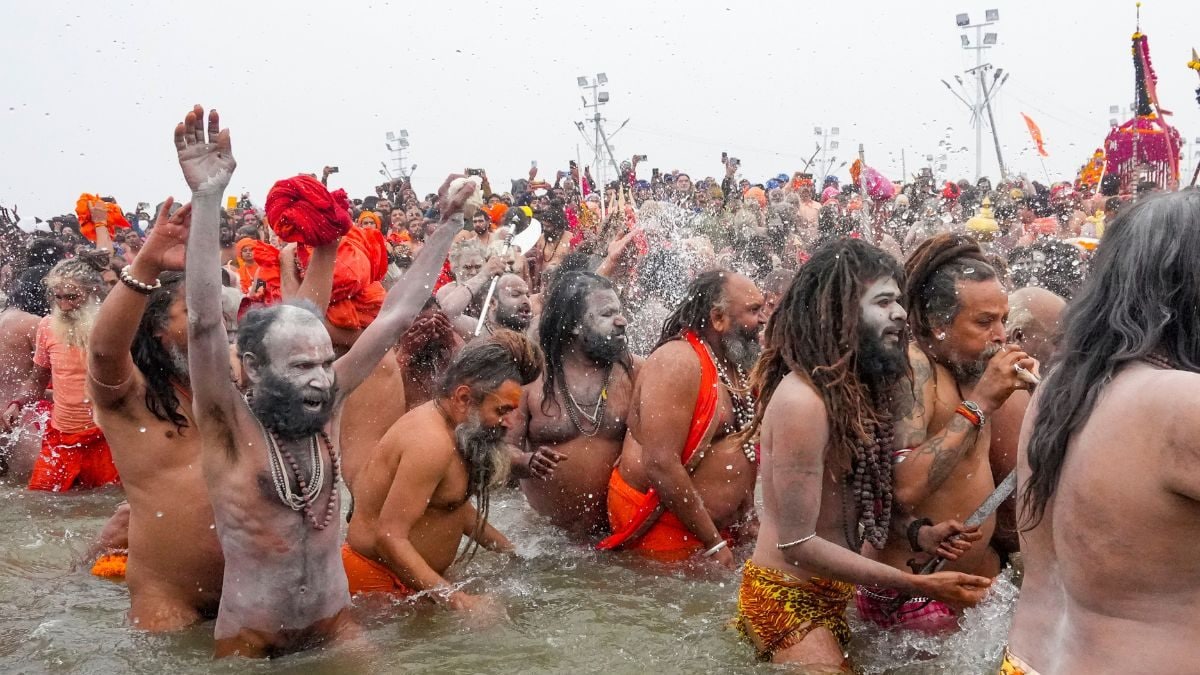 |
|
The Maha Kumbh Mela 2025, a significant religious gathering in Prayagraj, India, witnessed the first 'Amrit Snan' on January 14th, 2025, coinciding with Makar Sankranti. This sacred ritual, a holy dip at the Triveni Sangam (confluence of the Ganga, Yamuna, and Saraswati rivers), is led by the thirteen Akharas, Hindu monastic orders. These Akharas, pivotal to the Kumbh Mela, are not merely participants but custodians of its traditions and rituals, their roles extending far beyond the ceremonial bath. Their historical significance is deeply rooted, with records indicating their involvement in organizing and leading the Kumbh festivities since the 8th century, a role that, while formalized today, still carries considerable weight.
The organizational structure of each Akhara is hierarchical, typically headed by a Mahant or Acharya, responsible for spiritual and administrative duties. Under them are Mahamandaleshwars (high-ranking monks), Mahants, Kotwals, and Thanapatis, each with specific roles and responsibilities. The training within these Akharas is rigorous, encompassing spiritual practices, meditation, scriptural study, and physical disciplines such as traditional Indian wrestling and martial arts. This demanding regimen aims for physical and mental mastery, ultimately leading to spiritual enlightenment. The Akharas’ significance in Hinduism transcends the Kumbh Mela; they are vital in preserving ancient traditions, rituals, and teachings, transmitting knowledge across generations. They serve as spiritual training grounds, fostering discipline and self-realization in aspirants.
The Akharas also act as cultural custodians, participating in major religious events, festivals, and pilgrimages. Their presence reinforces their position as spiritual and cultural leaders within Hindu society. Historically, many Akharas have a strong martial heritage, preparing members to defend religious sites and uphold their faith; this is particularly evident in the Naga Sadhus, known for their warrior-like demeanor. Beyond their spiritual and cultural roles, the Akharas engage in social and charitable work, providing education, healthcare, and support to those in need. The Kumbh Mela itself sees a meticulously organized participation by these thirteen Akharas, each with a designated time and sequence for the Amrit Snan, reflecting a complex system of established customs and traditions.
The article highlights several key Akharas and their roles. The Juna Akhara, the largest, adheres to Shaivism and worships Lord Dattatreya, including the Kinnar Akhara (transgender Akhara) within its fold. The Niranjani Akhara, the second largest, worships Kartikeya and boasts highly educated members. The Mahanirvani Akhara venerates Sage Kapilmuni. The Kinnar Akhara, unique in its inclusion of transgender individuals, underscores the evolving inclusivity within Hinduism. The name change from 'Shahi Snan' to 'Amrit Snan' reflects a conscious effort to revive the ancient Sanskrit nomenclature, distancing it from perceived colonial connotations. This decision, stemming from historical conflicts between Akharas, aimed at preserving the sanctity of the event, highlights the ongoing negotiations and reconciliations within the religious hierarchy.
The historical context reveals that in 1761, a fierce conflict erupted between Shaiva and Vaishnava Akharas during the Haridwar Kumbh, resulting in bloodshed. To resolve such disputes, the Peshwa intervened in 1801, establishing a system to ensure a peaceful and organized sequence for the 'Shahi Snan,' later renamed 'Amrit Snan.' This system involved rotating the order of Akhara participation to prevent future conflicts. The Akhil Bharatiya Akhara Parishad (ABAP) plays a crucial role in resolving disputes and coordinating the schedule, submitting it to the administration for logistics and security arrangements. The procession for the Amrit Snan is a carefully orchestrated event, with the Acharya Mahamandaleshwar leading the group, followed by other officials in a prescribed order. Devotees line the route, seeking blessings from the saints.
The article concludes by specifying the five scheduled 'Amrit Snans' during the Maha Kumbh Mela 2025: January 14th (Makar Sankranti), January 29th (Mauni Amavashya), February 3rd (Basant Panchmi), February 12th (Maghi Purnima), and February 26th (Maha Shivratri). The meticulous organization, historical context, and evolving dynamics within the Akharas provide a comprehensive understanding of their profound significance in the Maha Kumbh Mela and broader Hindu society. The interplay between tradition, organization, and evolving social norms paints a picture of a dynamic religious landscape, where ancient practices are adapted and negotiated within the framework of contemporary concerns and inclusivity.
Source: Maha Kumbh Mela 2025: How Significant Are Akharas And How Do They Lead The Amrit Snan? Explained
